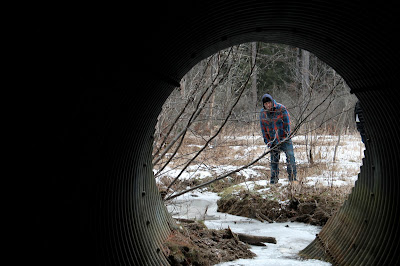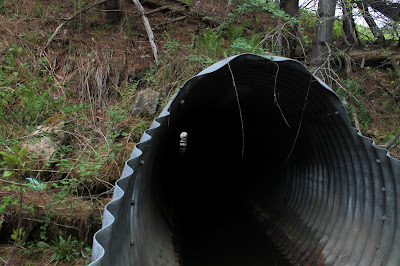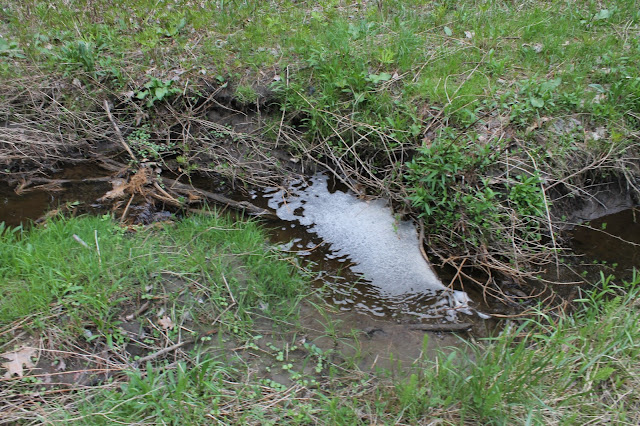Although Centennial may not be the most unique location to conduct a phenology study, the location studied in Centennial is a little more unusual. Located off the trails and close to Rt. 89, the location of the former beaver dams is an interesting look at the former habitat of these keystone species. While the beavers may have been removed from the area, the impact they made can still be seen. Visiting multiple times in the winter and in the spring allowed me a unique insight into how the engineering of the beavers changed the landscape at different periods.
Visiting in the winter, there were various tracks in the snow many seemed to be of fox or bobcat size. While walking to the site I came upon the sight of a fire which after doing some research was an old ski lift. As I entered the habitat the most noticable aspects was the number of number of trees that had fallen over the marsh area. They were not uprooted or sawn down rather chewed through.
The water entered the area from a large stormdrain linking centennial to the woods across Rt 89. There was much rust and oil flowing in from this point and some trash was strewn about the area. The land looked like it was still yet to recover from the damage done by the beavers but some successionary seedlings could be seen trying to start up.
 |
| Along the way an old ski lift was located. |
The water entered the area from a large stormdrain linking centennial to the woods across Rt 89. There was much rust and oil flowing in from this point and some trash was strewn about the area. The land looked like it was still yet to recover from the damage done by the beavers but some successionary seedlings could be seen trying to start up.
 |
| If the beavers are gone, who is this? |
 |
| The water carving through the marsh. |
 |
| The tunnel connecting Centennial to the other side of the rt. 89 |
 |
| Looking out into the beaver's former land. |
 |
| Although not visible, there was an oil sheen from rod runoff. |
 |
| The former habitat for the beavers. |
My second venture to the Centennial took place on a snowy night in March and I did not have much success. I found the snow to be too heavy to capture any good images besides for the weight of the snow on the non-coniferous trees.
 |
| The snow weighed down the branches on the edge of the marsh. |
When I returned in May the beaver habitat was completely different. The buds had bursted open and new grasses were climbing for the sky. The ferns had sprung open and new cattails were beginning to emerge. The land seemed to have sunk lower as the frost heaves had melted away. The beaver home which looked so sturdy cover in ice and snow seemed to be a skeleton of a home as the bare wood stuck out from it. The physical structure of the land seemed to have changed very little but the area seemed much more lively. Birds, bugs and small furry creatures dominated the ears and eyes. Looking at the former beaver habitat in the middle of winter made it seem like an antique but with the advent of spring, life returned to the area.
 |
| Ferns blanket the hill leading to the beaver habitat. |
 |
| The same drainage ditch spewing oil and dirty water. |
 |
| Former beaver home. |
 |
| Grasping for life in a fallen tree |
 |
| Remains of a beaver lodge. |
 |
| Either oil or iron-consuming bacteria. |
 |
| A peak back at the former beaver habitat. |














No comments:
Post a Comment